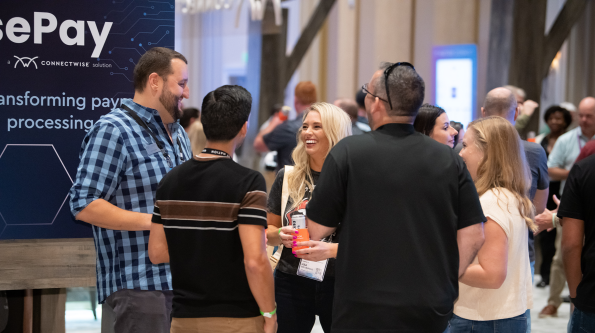In the competitive landscape of service-led solutions providers, achieving and maintaining high sales performance is crucial for business growth and success. Implementing effective incentives is essential to motivating sales teams and driving revenue. From commission-based structures to performance bonuses, recognition programs, and gamification techniques, incentives help motivate salespeople and drive growth—ensuring that the business and employees alike can be successful.
What are sales incentives?
Sales incentives are rewards or benefits offered to sales representatives as a means of motivating and encouraging them to achieve specific sales goals or targets. These incentives can take various forms, including financial rewards such as commissions, bonuses, or profit-sharing and non-monetary rewards such as recognition, perks, or professional development opportunities.
The purpose of sales incentives is to create a positive and competitive environment that drives sales performance. By offering incentives, organizations aim to align the interests of their sales team with the company’s objectives, ultimately boosting productivity, revenue generation, and overall business success.
Effective sales incentives not only provide tangible rewards but also foster a sense of recognition, competition, and personal growth. They serve as powerful tools for motivating sales reps, driving their focus, and encouraging them to go above and beyond in their sales efforts.
Why should you use sales incentives?
Using sales incentives with your team motivates, aligns, attracts, and retains top talent, fostering a culture of continuous improvement. With effective incentives, you can drive exceptional performance, achieve business objectives, and ultimately position your service-led solutions provider business as a leader in the industry. There are many benefits to sales incentives, including:
- Serving as a powerful motivator that drives performance and productivity
- Aligning the interests of your sales teams with the overall objectives of your organization
- Attracting and retaining top talent in the highly competitive service-led solutions industry
- Creating a culture of continuous improvement and learning within your organization.
How to use sales incentives to motivate reps
Motivating sales representatives is a critical aspect of driving sales performance and achieving business goals. Sales incentives play a vital role in keeping reps engaged, focused, and driven to exceed targets. However, without an effective strategy, they may not be successful for your business. Best practices for using incentives include:
- Setting clear and achievable goals: Clearly define sales targets and communicate them to your reps. Ensure that the goals are realistic and attainable, as unrealistic targets can demotivate rather than inspire.
- Offering financial rewards: Monetary incentives such as commissions, bonuses, and profit-sharing can be powerful motivators. Tie these rewards directly to sales performance, providing reps with a tangible incentive to work harder and close deals.
- Providing recognition and praise: Humans thrive on recognition and appreciation. Acknowledge and celebrate individual and team achievements publicly, whether through company-wide announcements, newsletters, or team meetings. This recognition can boost morale and motivate reps to continue performing at their best.
- Creating friendly competition: Foster a healthy competitive environment by implementing contests or leaderboards. Encourage reps to compete against each other, offering rewards for top performers. This not only drives motivation but also encourages knowledge-sharing and collaboration among team members.
- Offering non-monetary incentives: Not all incentives need to be financial. Consider offering perks such as flexible working hours, additional vacation days, or professional development opportunities. These non-monetary rewards can enhance job satisfaction and create a positive work environment.
- Implementing gamification techniques: Gamify the sales process by introducing challenges, badges, or levels that reps can unlock as they achieve specific milestones. This adds an element of fun and excitement, making the sales journey more engaging and motivating.
- Soliciting input: Allow reps to have a say in the incentive structure. Seek their input on what motivates them and incorporate their suggestions into the incentive program. When reps feel involved and heard, they are more likely to be motivated by the incentives offered.
What are some common commission mistakes to avoid when setting sales incentives?
It’s not always straightforward when introducing sales incentives, as leaders need to align the sales team with the company’s overarching strategy and financial goals to find success.
To do this, companies focus on intentional incentives that steer the sales team toward long-term growth. The most successful compensation models maintain your company’s north star and allow employees to earn excellent compensation—without exceeding your expenses. Some common mistakes to watch out for include:
Setting the same commission rate for services and products
Many owners are tempted to pay for services and products at the same commission rate. After all, every dollar earned from a services sale is worth as much as a dollar earned from a product sale, so why should one type of sale pay more?
This outlook doesn’t consider the higher risk to the business of not meeting its services margin. If you don’t sell a product, it’s the vendor that feels the sting. But if your managed services offering is not being fully leveraged, you pay the price for that lost productivity. That’s why successful services-led organizations pay a higher commission rate on services—because ultimately, dollars earned from services do have a bigger impact on your bottom line.
Paying full product commissions—even when service quotas aren’t met
If reps can get away with mostly selling products without hurting their commission, some will continue to do so. It feels safe and familiar, so why should they change their behavior?
To nudge them in the right direction, top-performing companies set quotas for services sales. If a rep doesn’t meet their quota, a percentage of their commissions on products are held back. That way, they can still make good money from selling products, but they have a strong incentive to sell services, too—easing the transition to services-led behavior.
Misleading reps into thinking they’re selling services at profitable prices
When companies aren’t selling enough services to make the gross margins they could be making if their techs were fully leveraged, they can struggle to figure out what rate to set services commissions at. To get around this, they often make up a gross margin and base the commission rate on that.
Unfortunately, this can mislead reps into thinking they’re selling at profitable prices. That’s why top performers aim to calculate the real service margin and tie commissions as closely as possible to that margin. This helps the sales reps understand what’s going on with your company’s income statement, ensuring they’re not unwittingly hurting your bottom line.
While sales incentives are a powerful means of encouraging salespeople to increase revenue, it’s just one way to drive profitability. The ConnectWise Partner Program helps MSPs boost sales with GTM support in sales and marketing.













